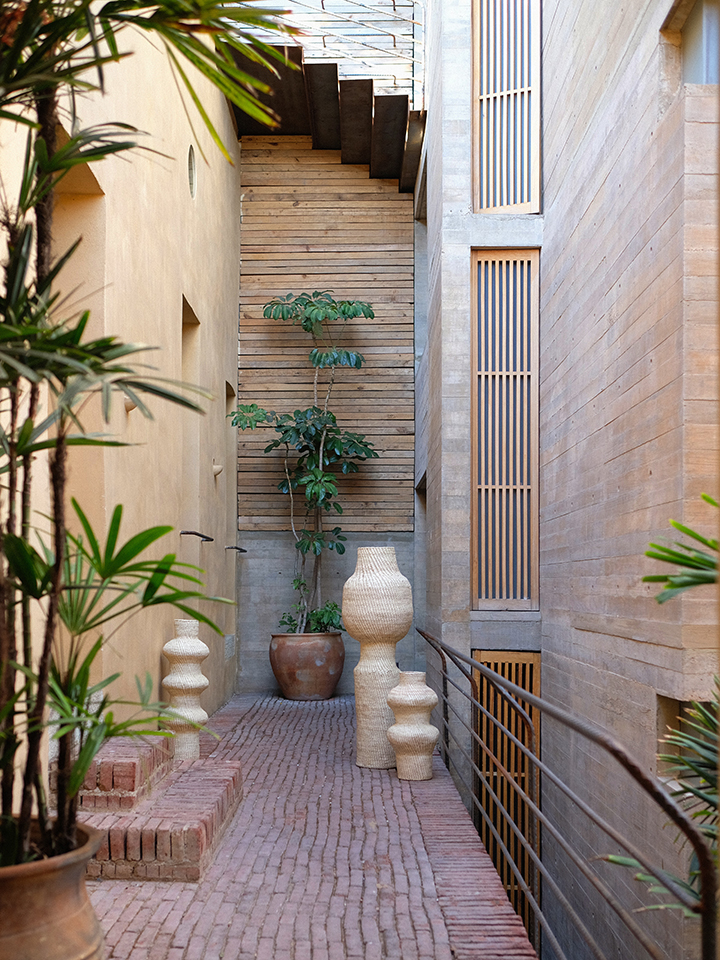We may earn revenue from the products available on this page and participate in affiliate programs.
“When I first moved to Oaxaca, I didn’t have a home. I was living with artisans and their families, sleeping on their floors, and immersing myself in their way of life and traditions,” says 33-year-old designer Javier Reyes.
A native of the Dominican Republic, Reyes relocated to Barcelona after college to pursue a career in photography and graphic design. But on a fateful holiday in Oaxaca, he became fascinated with the traditional handcrafts of Mexico. “I immediately felt like there was an opportunity there, so I abandoned my apartment in Spain—I even left my clothes—to return,” he says.

Those first months in 2017, bunking with makers, was a time for him to dive fully into the art of weaving, learn from the masters, and build relationships—ones that would prove to help Reyes finally start the business selling his designs, Rrres, he had been mulling over for years. Now his studio works with an established group of craftspeople to bring his fresh perspectives to life using techniques passed down through generations. All the small-batch, handmade homewares, from his well-known vibrant rugs to ceramic jugs to voluptuous woven palm baskets, feature Reyes’s signature graphic shapes and curves—and honor the country’s lost practices.

It’s all about mixing the past with the present, which in some pieces is represented symbolically and others figuratively. “It’s a collective effort,” explains Reyes, “and truly an exploration of Latin American culture as a whole. Since I’ve moved here, I’ve gained a much better understanding of our shared cultural history.”
On the hunt for his own digs, Reyes envisioned an integrated space that could serve as both a home and work studio. “These two things feel almost seamless in my mind,” he says. When he first saw the 200-year-old building he eventually chose, tucked away on a cobblestone street with adobe walls and 16-foot-high ceilings, it was a completely empty shell, a positive in his eyes: He could make it whatever he wanted it to be.

From the beginning, nothing about the decor was planned—he didn’t even know how long he wanted to stay in Oaxaca, after all. So Reyes kept it simple, starting with the kitchen, which he had to build from scratch. He designed two simplistic pieces of wood furniture to house the stovetop and the sink. Yet “I wanted to showcase my love for combining things that relate to Latin American popular culture with commonplace items that can be found anywhere,” he notes, which is where the statement stools come in. Reyes snagged the seats for a steal at a neighborhood market and reimagined them in saturated red and blue stripes, “similarly to how we do back home in Caribbean countryside houses,” he says.

Similarly, Reyes’s standard timber bed frames boast a chunkier shape than is typical, and wood canes lean against various walls, now dressed up in vibrant paint. Everyday objects are Reyes’s jumping-off point for developing something new. “Finding raw materials, looking back to old ways of creating, using things that have meaning to you, allowing little imperfections—these notions have the ability to bring a special feeling to any room,” he explains.

For Reyes, openness and light are of utmost importance to his creative process. “I love to see different tonalities and colors during the day, and how they change as day fades into night,” he says. On the roof, a terrace provides views of Oaxaca’s mountains and a crucial connection to nature. “I often sit for hours and work through moments of contemplation, and I have to be able to see outside—it helps me move my process along,” he adds.

Admittedly, Reyes is always rearranging his flat-weaves and sculptures in order to get a better sense of his creations’ capabilities. “I am able to style the pieces in my interiors and see people’s interactions with them,” he explains. The live/work space also serves as a showroom, allowing visitors to enter his world and understand how they could incorporate Rrres products into their own houses, beyond the obvious. “Maybe they never thought about hanging a rug high up on a wall, almost like a painting,” notes Reyes.

It’s the small intricacies—the uneven texture of hand-thrown clay, the subtle differences in the woven pattern on two rugs—that Reyes is most passionate about showcasing. “Mexico is filled with handcrafted items, and even the most simplistic are beautiful,” he says. “I like to remind myself of how incredible, genuine, and humble these pieces really are—as well as the people who make them.”
